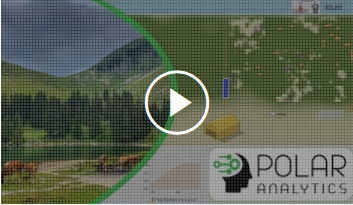Motivation: Grazing herds consume grass and other plants in paddocks and leave nutrient rich excretion behind. The nutrients are absorbed in the soil and may leach or wash into waterways. Similarly microbes may find their way into waterways, degrading water quality. In many countries there are now tight restrictions in place to protect water resources. How can we best start discussions around this issue using simple simulation models?
The Model: The model uses system dynamics and pedestrian libraries to represent a typical situation where cows graze two paddocks interchangeably. This gives the vegetation time to regrow, for example. The paddocs are on a slight inclide, sloping to a small river or stream and nutrients like nitrogen are absorbed on the land and washed into the waterway when it rains. The cows consume a certain amount of vegetation each and the total equivalent to dry matter is calculated. They also consume a certain amount of water (from a shared trough). Cows can be sent to the paddocks in any order an the user can view the state of the vegetation (that recovers over time), the slope of the land or the nutrient load by selecting the display from a tick box. Rain downpurs can be initiated and stopped using a tick box, allowing the nutrients to be washed into the stream. A device in the stream records the nutrient load in the water under all these conditions.
The Discussion: By varying the way that cows graze the impact on the land can be visualised by looking at vegetation depletion and nutrient build-up. The impact of the nutriets leaching into the water can be explained and the impact of rain washing nutrients into the waterway van be visualised. The cows graze in a ‘natural’ way, resting and taking in water inbetween grazing sessions. This behaviour is modeled on drone recordings of cows in the real world, adding a sense of realism to the simulation, and making it easier for the users to believe the validity of this very simple model.
Future Expansion: Adding riparian plantings along the water’s edge can show the limiting of the water polution that can be achieved. Adding soil models can show how different terrains may influence the nutrient loading. Adding a range of nutrient estimators and bacterial models may add value.
